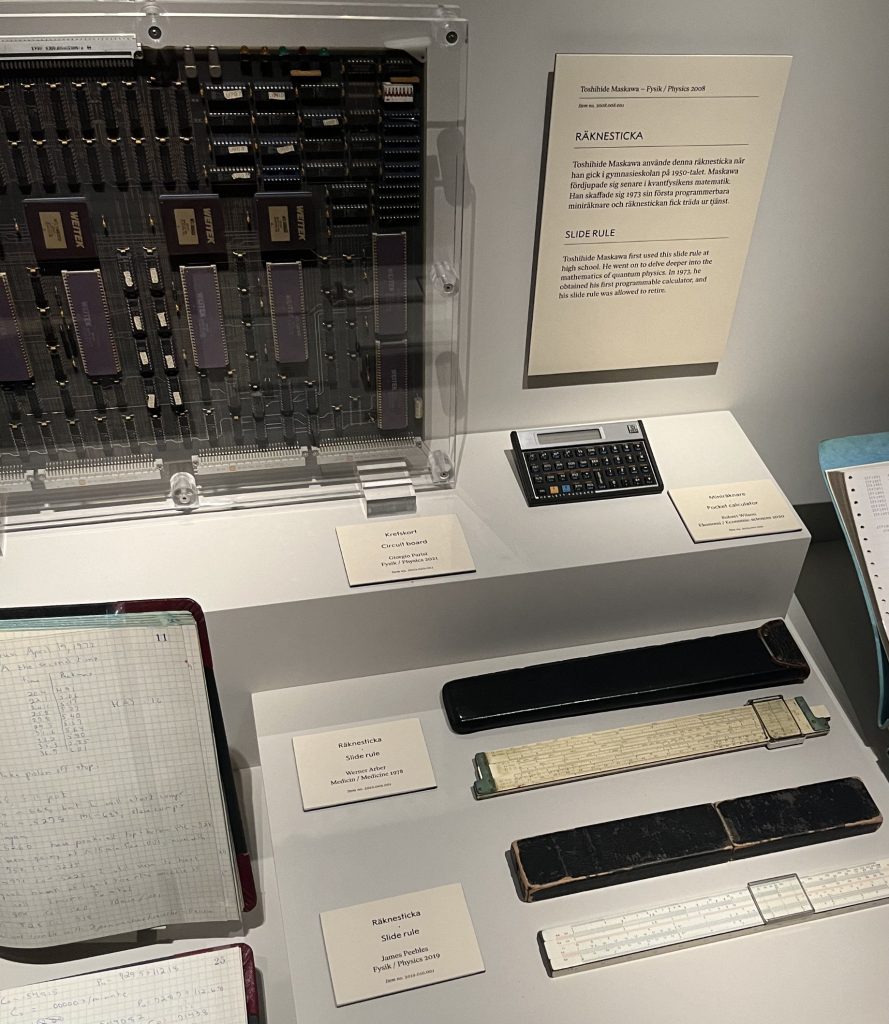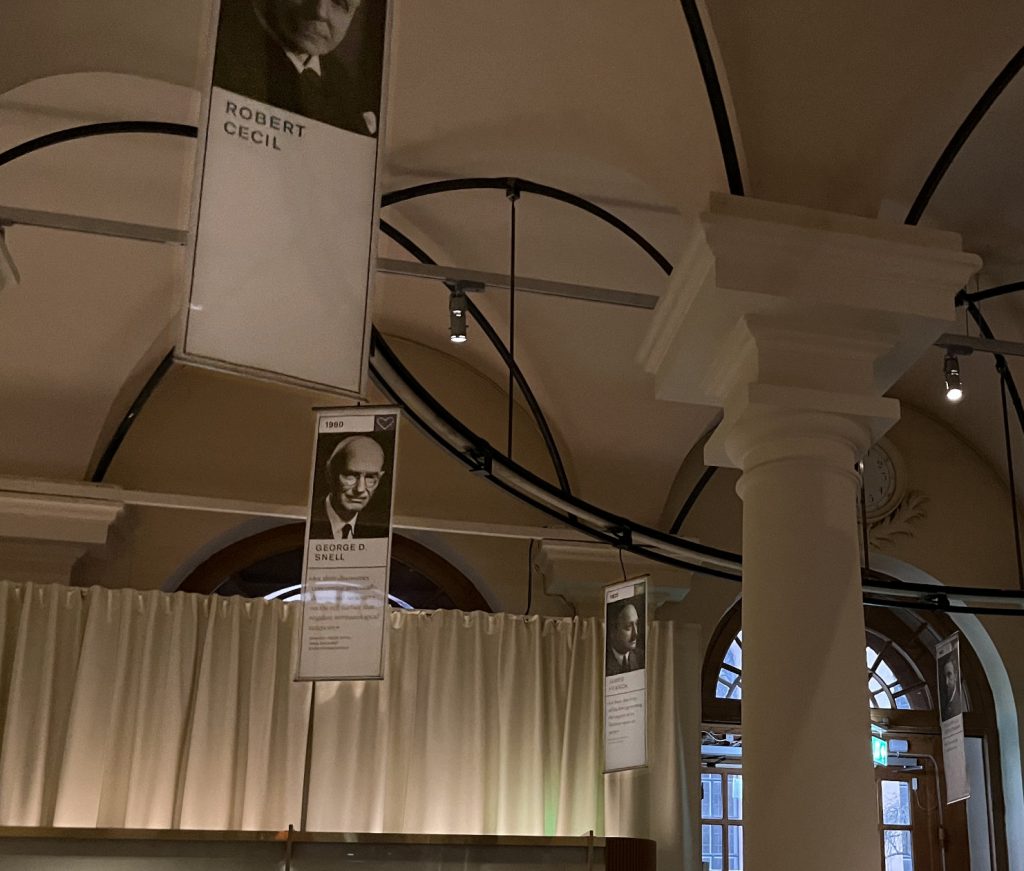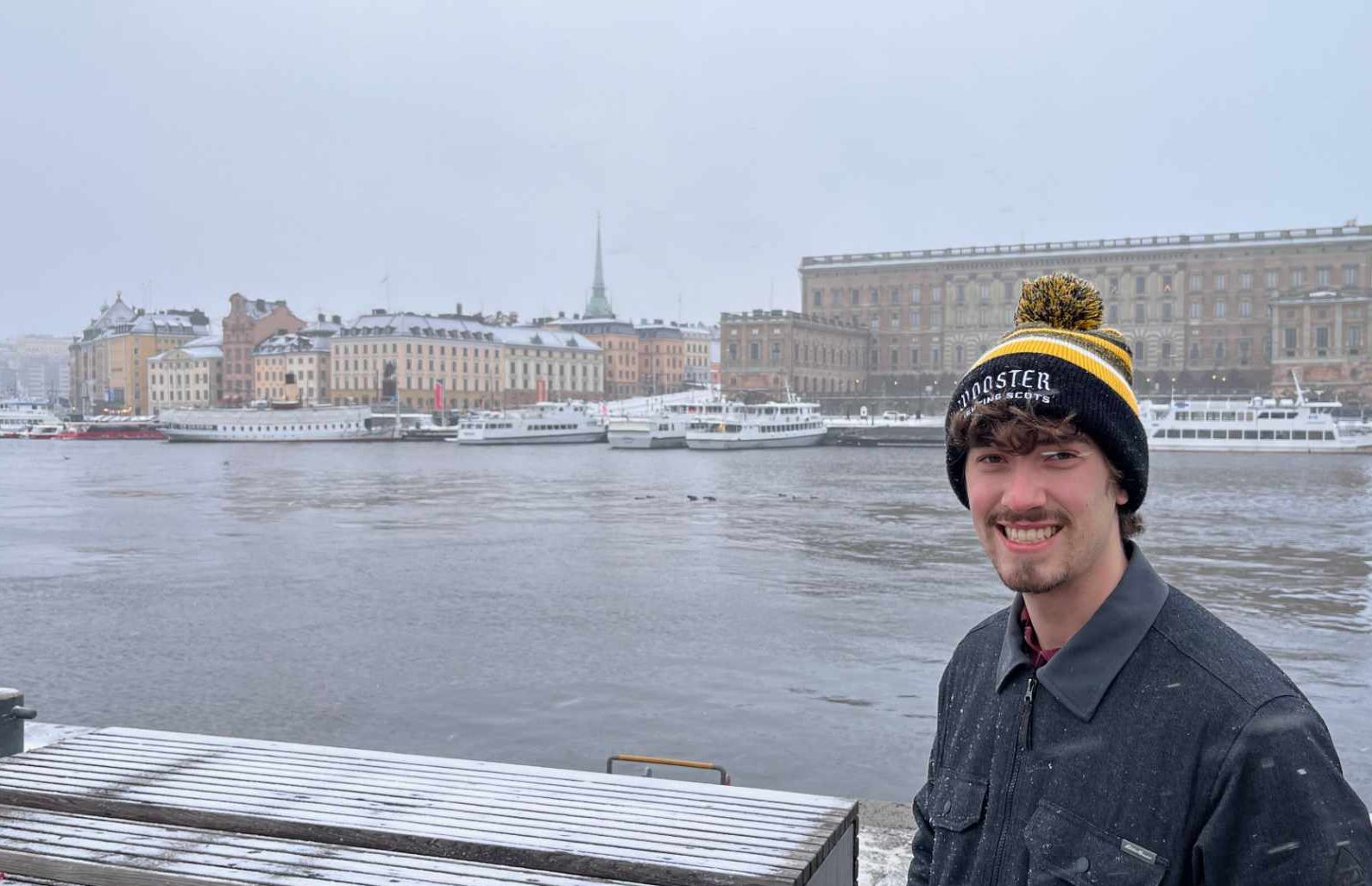A delayed post!
Note from Dr Lehman: Gustav Bourdon ’26 was the Physics Club Ambassador to Sweden in spring 2024. I asked him to write a guest blog post, which he promptly did. (Thank you, Gustav!). I then somehow didn’t get it posted promptly. So here we are in 2025 — enjoy this time-traveling post back to April 2024!

A few weeks ago, I visited the Nobel Prize Museum in Stockholm with my class. The museum was very interesting, and focused on the current prize winners, the life of Alfred Nobel, and past prize winners. The main hall of the museum is filled with objects donated by prize winners that relate to their achievements – some gave parts of the instruments that they used to make their discoveries, while others donated calculators or slide rules that they used. On the ceiling of the hall was a track showing all the prize winners. I also visited the museum earlier with Juno, who is studying in Berlin and had come to visit me, but most of the museum was under renovation, so we only got a photo with the exhibit showing this year’s winners.

Finally, while the College of Wooster might not have any professors that are Nobel Laureates, one of its graduates did win the Nobel Prize in Physics! After graduating from Wooster in 1913 and getting his PhD from Princeton in 1916, Arthur Holly Compton was a physics professor at Washington University in St. Louis, where he discovered that X-rays could transfer momentum, a phenomenon now called the Compton effect, a discovery that won him the Nobel Prize in 1927. Unfortunately, I couldn’t get a photo of Compton on this track at the museum.

